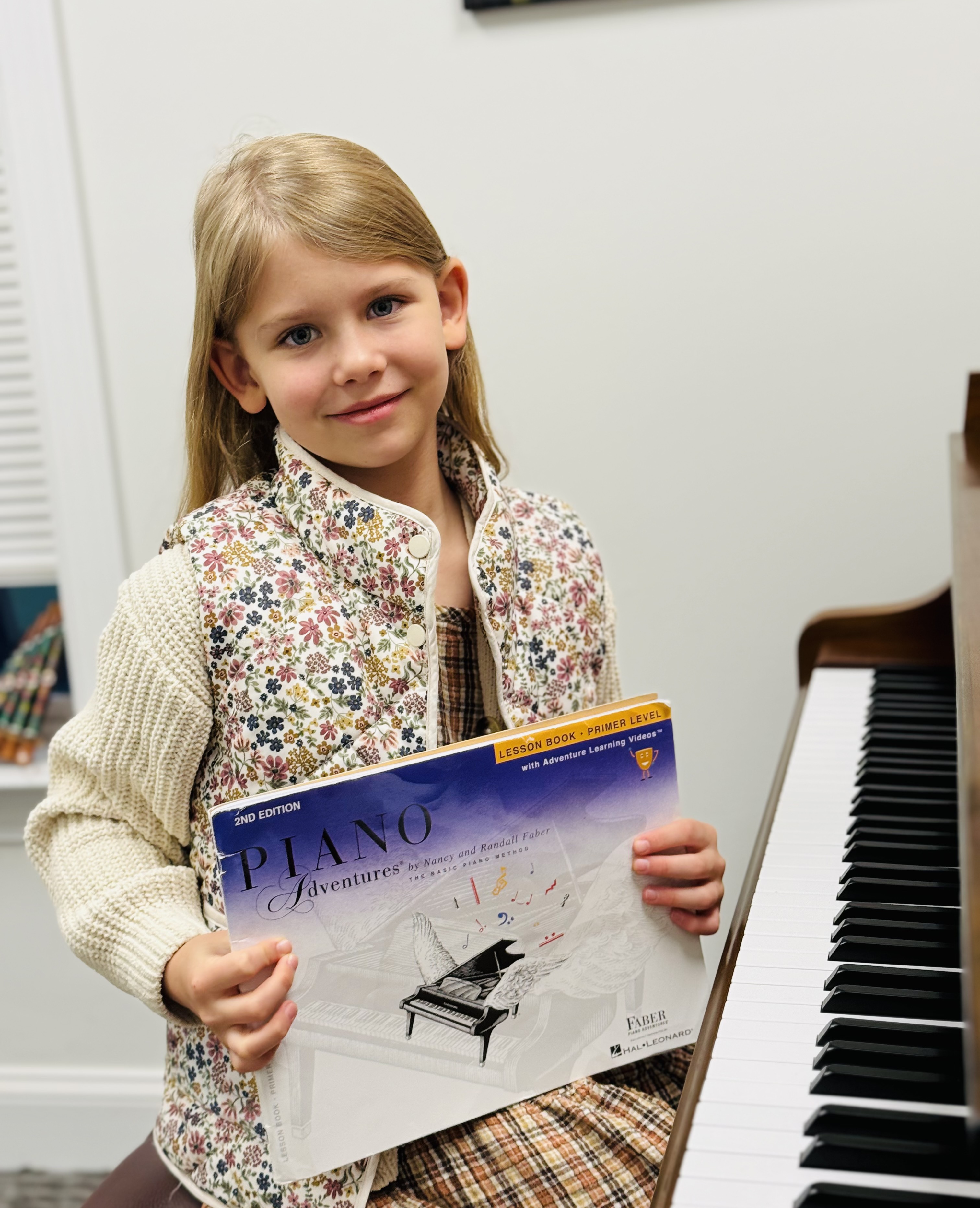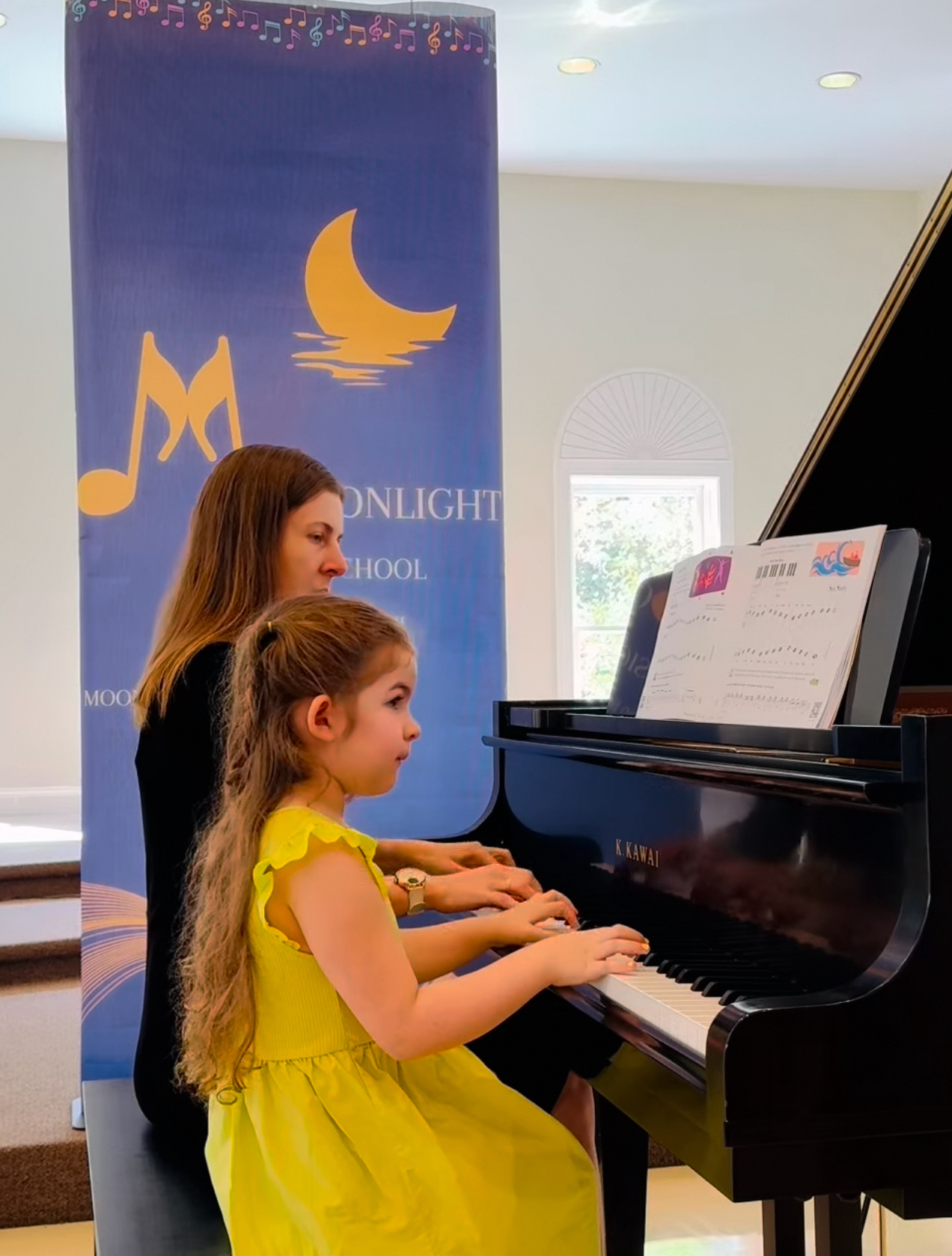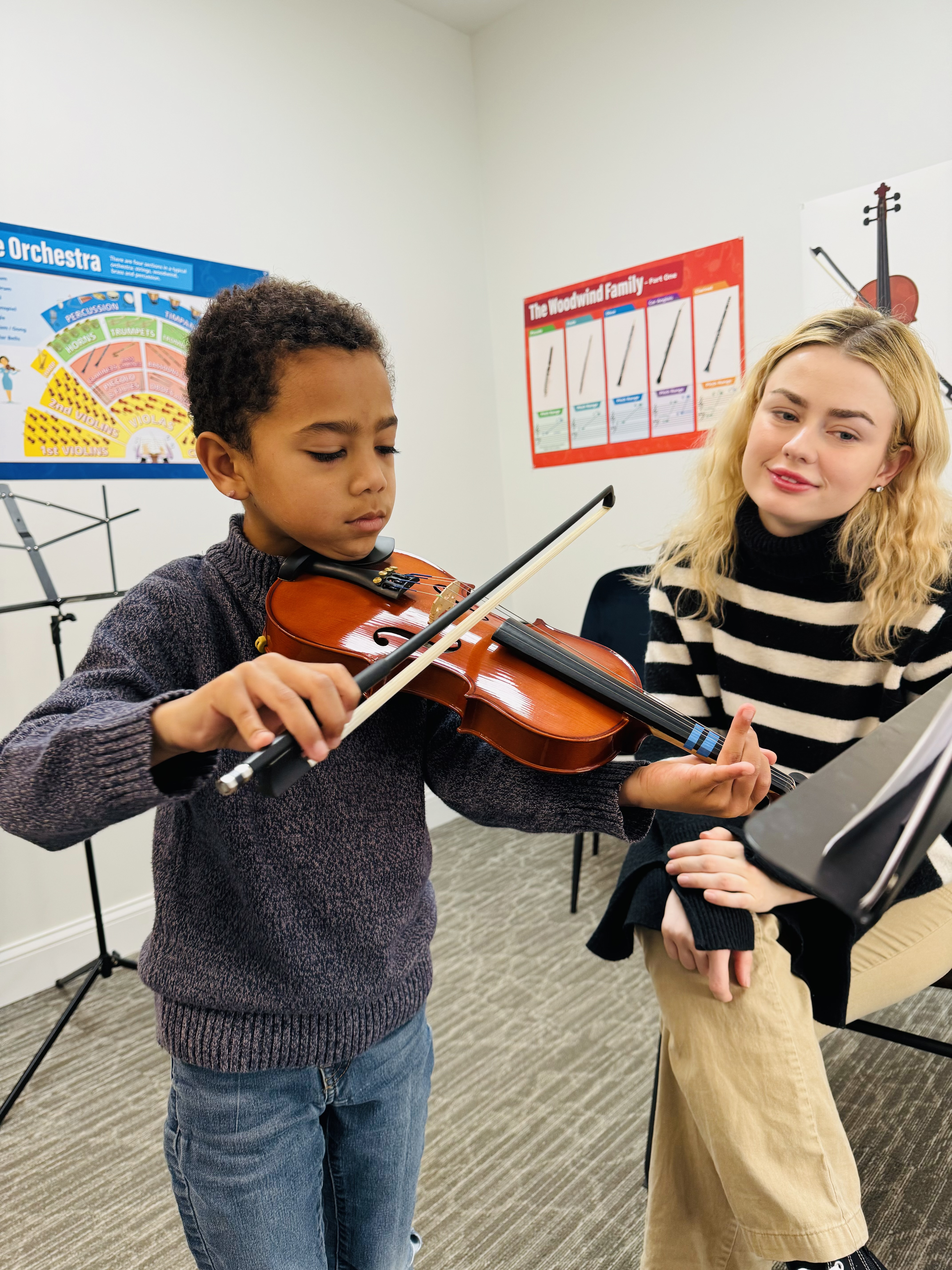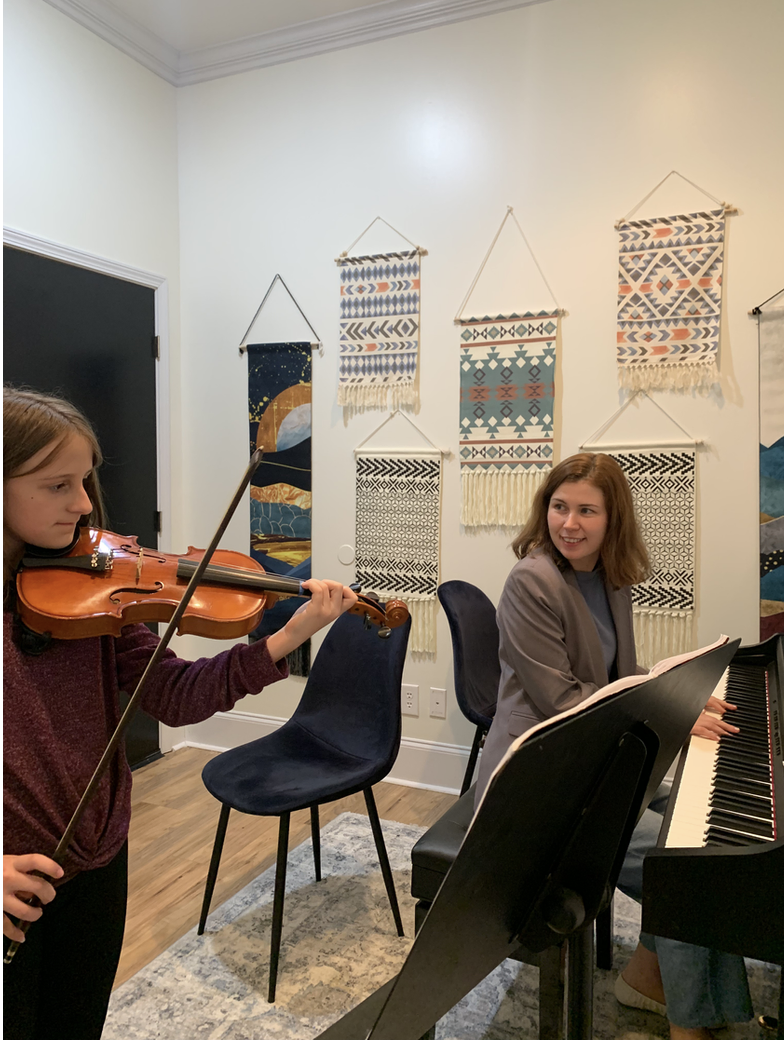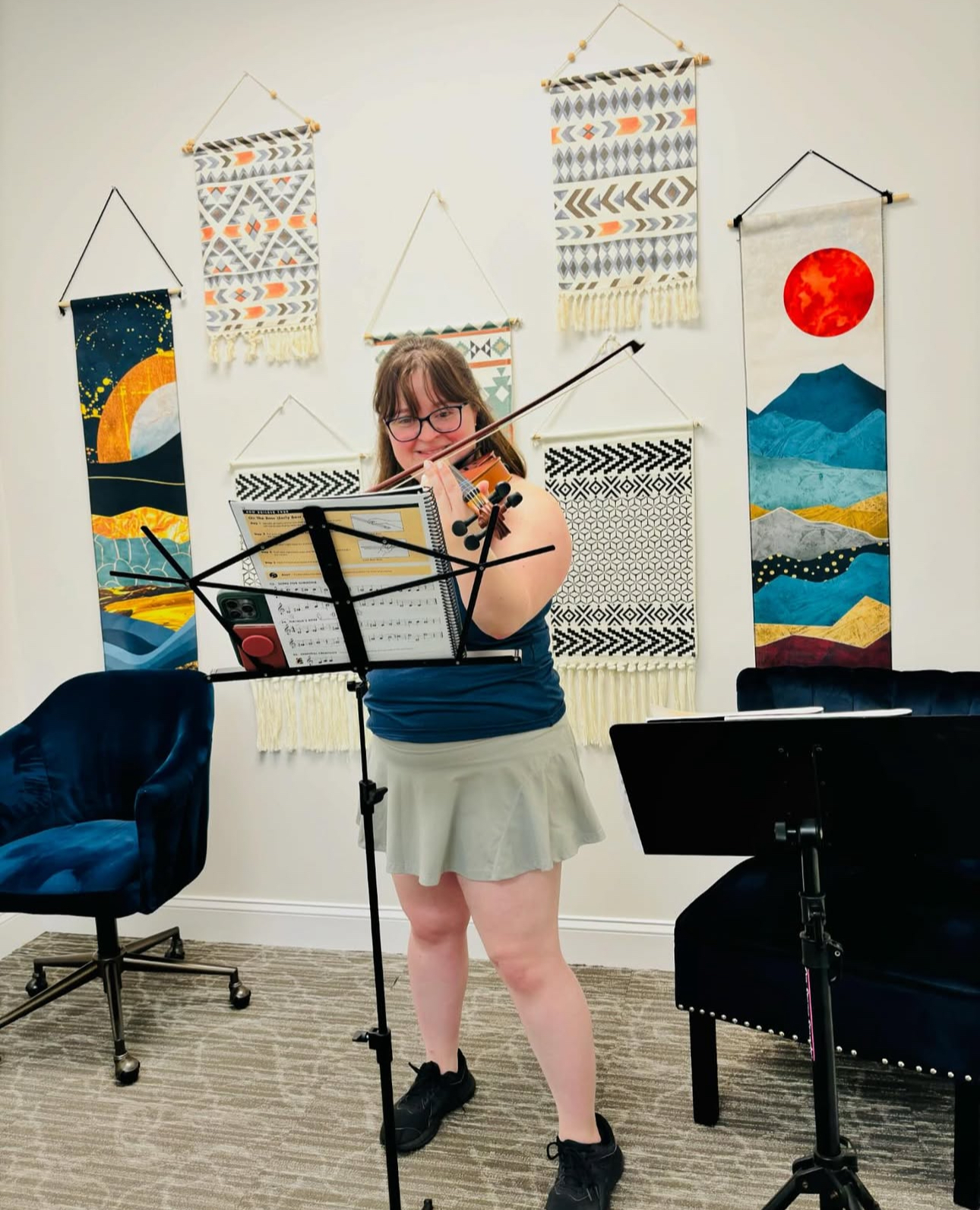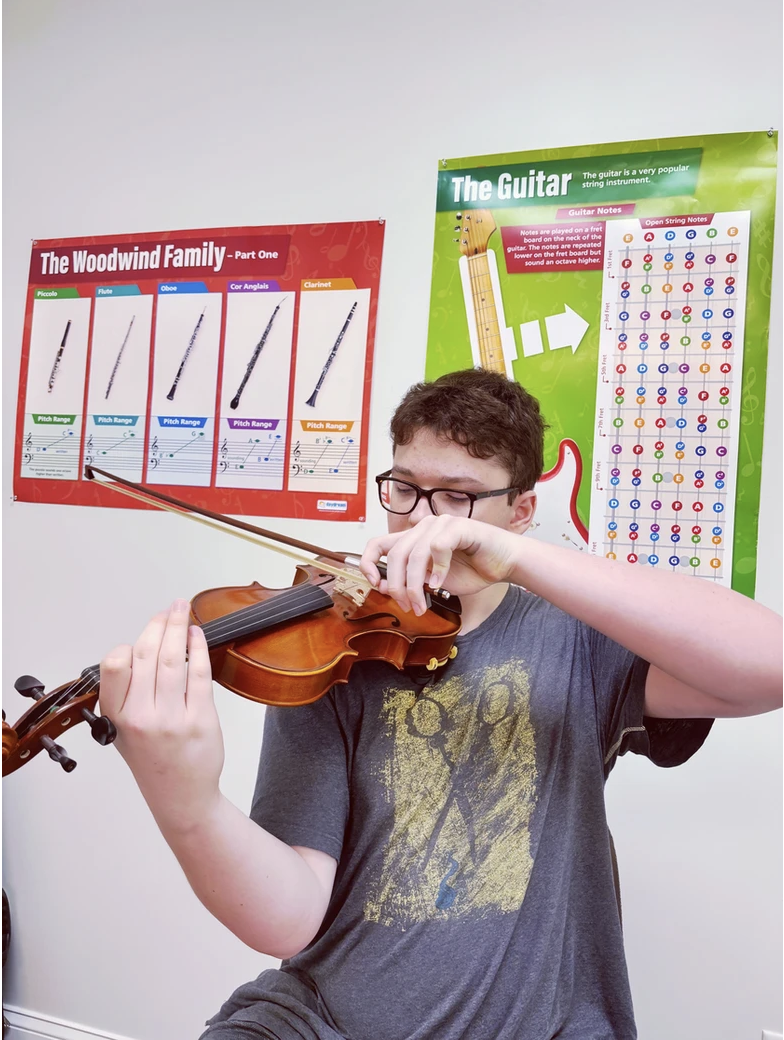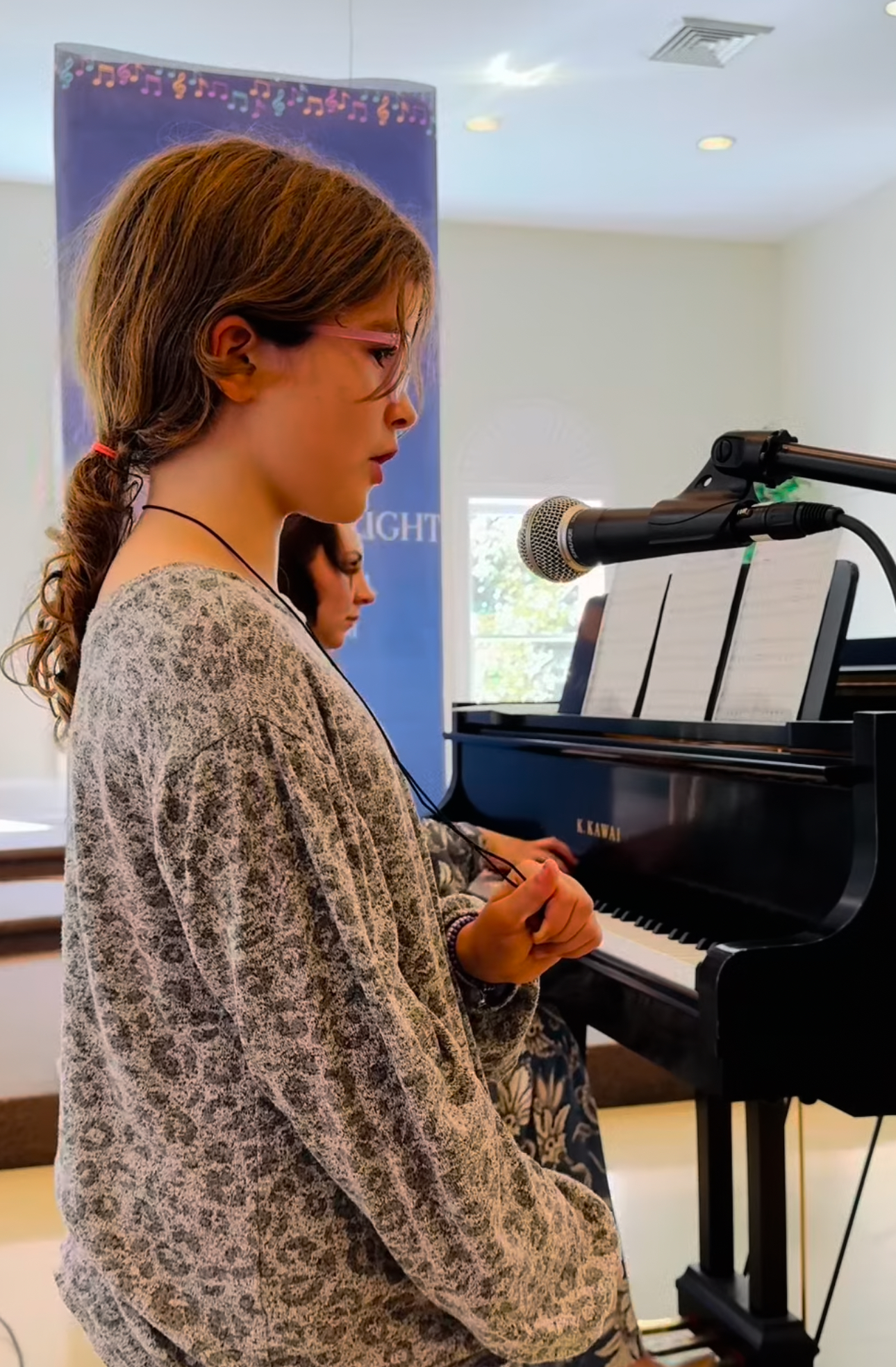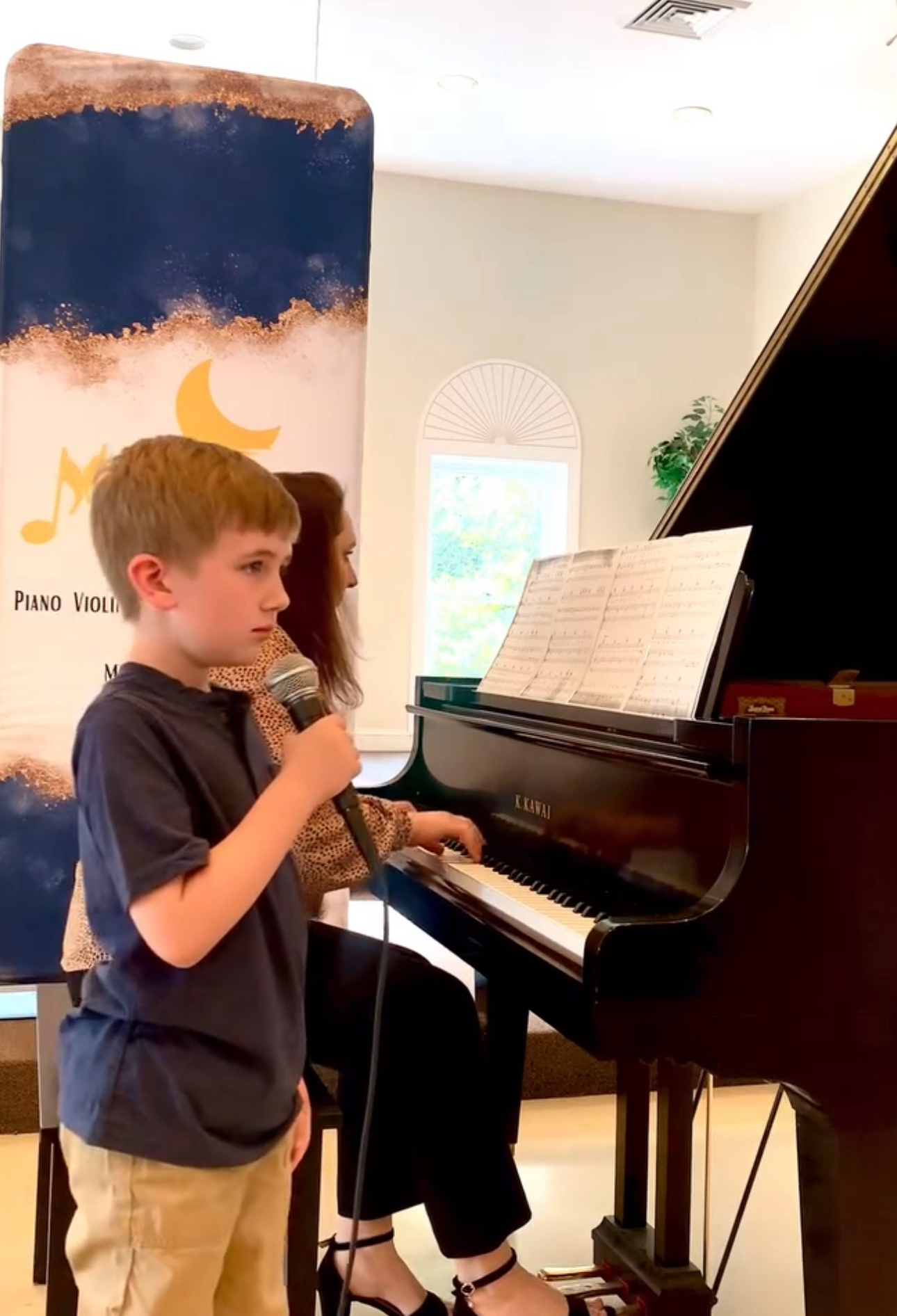My daughter has been taking piano lessons at Moonlight Music School for several months. Her teacher, Anna, is
really passionate, patient, and professional. My daughter enjoys going to music class. I also really appreciate
how flexible they have been with scheduling the classes. I highly recommend taking music lessons at Moonlight.
Ivy Michelli
My daughter started piano lessons this year and has had the best experience! Yekaterina provides the perfect
combination of fun and structure. You can really tell that she cares about my daughter’s progress and takes
additional time when needed if a concept is not understood. Highly recommend!
Harmony Smith
I am an adult beginner taking piano lessons with Olena. She is a great teacher! She is very talented as a musician
and teacher. I have progressed faster than I expected by taking lessons with her.
Harmony Law
Yekaterina is amazing! My son has been playing the piano under her teaching for the past few years. He has taken lessons
both at her studio and at home. We are continuously impressed at the skills he gains each week and also the confidence he
has gained over the years to perform in front of an audience. We would highly recommend Moonlight Music School to anyone
looking for a new music class.
Jennifer McIntyre
My son started classes a few months ago for the first time and I've seen improvement in his performance.
Before, he was home trying to teach himself. Ms. Anna is a great teacher who is patient and encouraging.
It's great to watch her teach my son and to see his confidence grow. One of the best decisions I've made this year.
Nadia Grey-Kelly
I couldn’t be happier with my daughter’s piano and voice teacher, Ms Anna. It has been a year now since my daughter started her
piano and then voice lessons at this location and Ms Anna has been incredibly patient and has made a world of difference in helping
my daughter grow her love for music.
Melrose W
My son started piano lessons in January 2023 with Miss Katya. She is a wonderful teacher, and he has learned so much in such a short time.
He looks forward to his lesson every week. I would highly recommend this music school to anyone looking to take piano lessons.
Tessa Lewis
Love this school. My daughter started from the very beginning and has accomplished a lot for only six months with Katya. Katya is her first
piano teacher and I didn’t know what to expect but everything turned great! My daughter enjoys every lesson.
Yana Dribnokhod
I've been taking my young son there for almost a year now. Ms. Katya is a fantastic teacher with great patience for new, young learners.
Her teaching style is more about learning basic skills, finger positions, and music reading comprehension through songs instead of rote memorization
of scales. These sessions have upped his confidence behind the keys enough to perform in a recital recently. Highly recommended to anyone.
Benjamin Pulley
Yekaterina is cool, patient and very professional. She is currently teaching my three boys and they love her, but mainly, listen to her. My sons play a mix of
Classical and Standard pieces and actually enjoy it. They have advanced so much. I can't imagine a better fit for our family. Thank You!
Anna Yakovlevna
